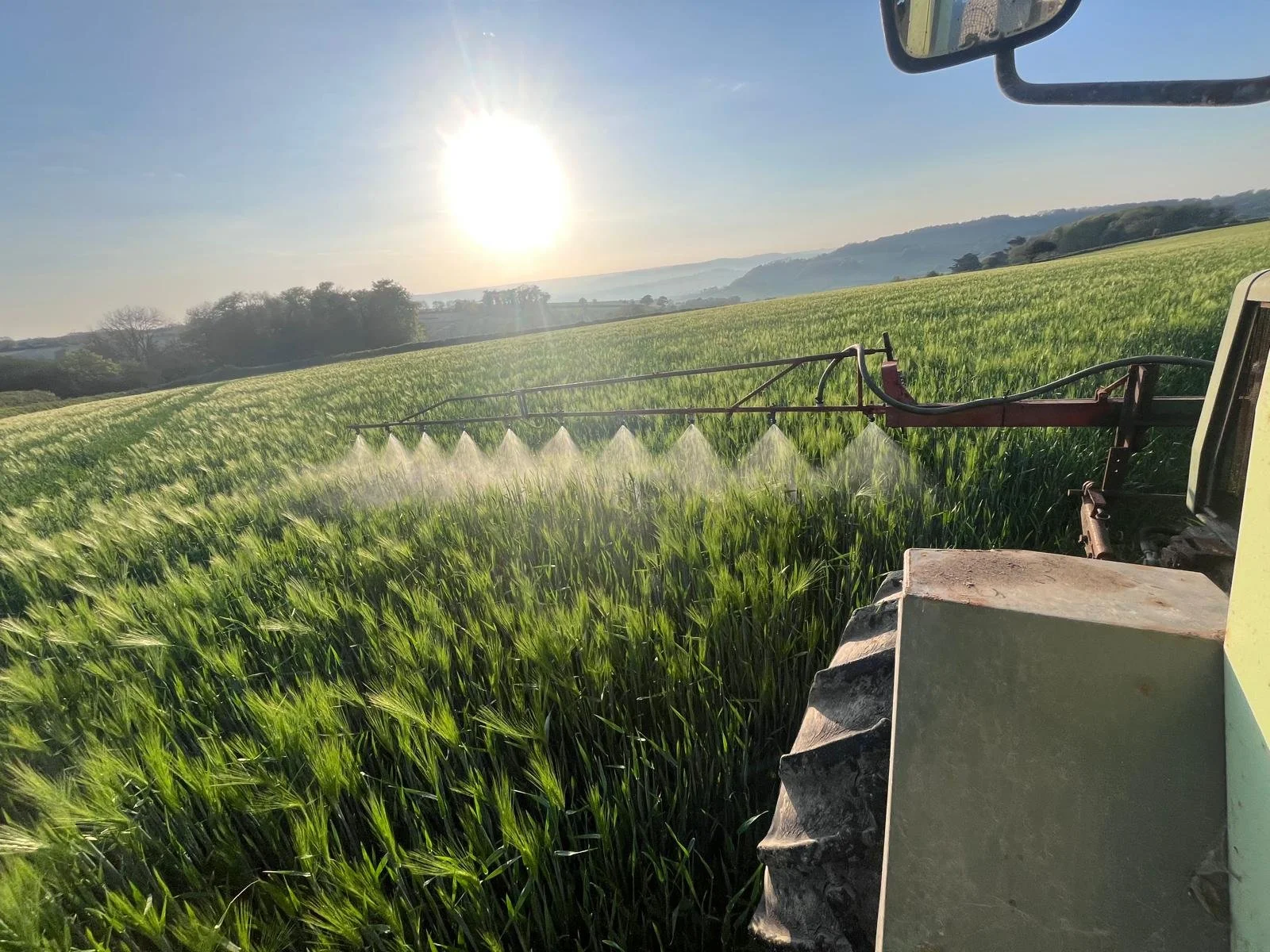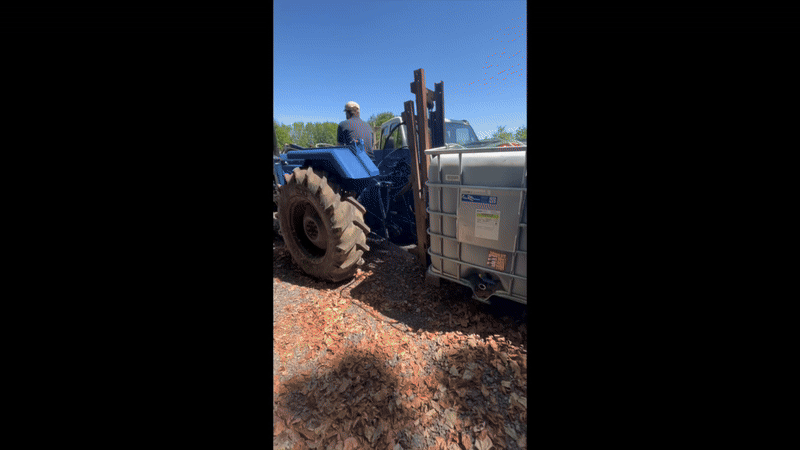Insights from UK Field Trials: Fermented Seaweed Biostimulant in Practice
At a Glance
Carrot plots treated twice or three times produced 4.12–6.01 tonnes/ha higher yield than the untreated control.
Spinach BRIX rose by 50%, and chard by 33% after foliar seaweed applications during winter compared to untreated.
Grass/turf sown with seaweed extract established 25–30% faster than standard and stress controls in trays.
In drought simulation, seaweed-treated turf stayed green with upright growth after 12 days unwatered; controls yellowed and collapsed.
All evidence here is from controlled trial reports showing statistically significant increases in plant health markers.
Methods in Brief
Each trial compared untreated controls with grassland, vegetable, or tray-grown crops sprayed or sown with fermented liquid seaweed.
Crops/trials: Permanent pasture (grass, turf), organic carrots, winter spinach and chard.
Locations: Mixed UK locations; settings include field (carrot, pasture, market garden) and tray/polytunnel.
Application: Foliar sprays for grass, spinach, chard; soil or tray incorporation for turf and carrots. Rates ranged from 100 ml/10 L solution to 400 L/ha for carrots or tailored to the protocol.
Controls: All trials used a well-matched untreated group.
Measurement: Main outcomes were BRIX (sugar), yield (kg, t/ha), and visual/timed growth or resilience milestones.
Timing: Measurements were made after multiple weeks to harvest windows, or at clear developmental stages (emergence, canopy, drought response).
Results by Outcome
Yield or Growth Response
What was measured:
Total yield in carrots.
BRIX (soluble sugar) in grass, spinach, chard.
Establishment speed and quality in grass/turf trays.
Results:
Carrots:
Control: Baseline yield
FLS (seaweed) 2x: +4.12 t/ha
FLS 3x: +6.01 t/ha
(400 L/ha per application).
Spinach and Chard BRIX:
Spinach: 6.0 (untreated) → 9.0 (seaweed), a 50% increase.
Chard: 4.5 (untreated) → 6.0 (seaweed), a 33% increase.
Grass Lawns:
BRIX: 1.31 (control) vs. 1.71 (treated) – a mean 0.40 unit rise (p=0.0116).
Tray/Turf Trials (establishment):
Seaweed accelerated establishment by 25–30% compared to untreated in standard and saline conditions.
For each, see charts and tables below.
Practical meaning:
Seaweed biostimulant gave measurable boosts to root crop yield, sugar/BRIX content in grass and leafy crops, and faster grass or ground cover establishment under various stresses.
Limits or caveats:
No data was collected on mineral content, shelf-life/quality, or long-term field outcomes.
Establishment and Rooting
What was measured:
Time to germinate, time to ground cover (grass trays)
Establishment under saline and drought stress (trays).
Results:
Seaweed-treated grass/turf trays established 25-30% faster than either saline-stressed or just watered controls.
Germination and emergence were more uniform, and earlier sward closure was visually confirmed.
No negative effect in stress treatments; seaweed treatment outperformed both standard and problem soil (saline) controls.
TreatmentEstablishment SpeedResilienceQuality at maturitySaline stressSeverely delayedVery poorCollapsed, sparseWater onlyBaseline/normalGoodAcceptableSeaweed extract25–30% fasterStrongDense, upright, greenGrass establishment rate improved under standard and stress, picture shows day 4 establishment.
Stress or Disease Observations
What was measured:
Drought survival and turf appearance (grass/turf trays)
No disease or pest scoring in any trials.
Results:
Seaweed-treated turf pots stayed green and upright after 12 days with no water. Water-only and saline-stress controls yellowed, thinned, or collapsed.
No grass, carrot, or leafy crop trials reported any pest/disease incidence or difference.
Extended drought simulation showed greener, more resilient turf where seaweed applied.
Limits:
No systematic fungal, bacterial, or pest scoring was conducted. All visible/measured differences were stress-related.
Soil/Biology Indicators
What was measured:
BRIX as a proxy for plant health and energy (grass, spinach, chard).
No trials measured direct soil biology/organic content, worms, or detailed soil properties.
Results:
Seaweed application consistently lifted BRIX, a practical marker of plant nutrient content and potential natural defence, in every case tested.
CropBRIX UntreatedBRIX Treated% IncreaseGrass1.311.71+31%Spinach6.09.0+50%Chard4.56.0+33%[Chart placeholder: Outcome vs Control — bar chart — source: attached_file:1+2 — caption: Each crop showed a notable rise in BRIX after seaweed spray.]
Limits:
Further research would be needed to connect these results to longer-term soil health or microbe activity.
Results by Trial
Trial 1: Haye Farm Grass BRIX Trial
Site & Crop: Grass, field/forage setting, Haye Farm.
Setup: Single summer foliar application vs. unsprayed control, sampled post-treatment.
Key numbers:
OutcomeSprayedUnsprayedUnitsnResultBRIX1.711.31units–+0.40 (p=0.0116)
-Interpretation:
Foliar seaweed lifted grass sugar/BRIX by 0.40 units, a statistically significant boost. This suggests potential for better forage quality and resilience near-term.
Trial 2: Winter Spinach & Chard BRIX Trial
Site & Crop: Market garden, perpetual spinach and chard, winter.
Setup: Foliar spray every two weeks, December–February, compared to untreated crops.
Key numbers:
CropUntreated BRIXTreated BRIX% UpliftSpinach6.09.050%Chard4.56.033%
-Interpretation:
Seaweed increases sugar content even in slow-growth winter, implying more energy in the plant. Practical upshot: greater resilience and possibly stronger post-winter regrowth.
Trial 3: Organic Carrot Yield Trial
Site & Crop: Organic carrot, field plot trial, UK.
Setup: Compare no-treatment, 2-app (2nd & 6th true leaf), 3-app (2nd, 4th, 6th true leaf). 400 L/ha per spray.
Key numbers:
TreatmentYield Uplift (t/ha)2 applications+4.123 applications+6.01
-Interpretation:
Fermented liquid seaweed produced substantial yield increases in carrots and more large/marketable roots, supporting trial claims of practical economic benefit for growers.
Trial 4: Grass/Turf Tray Stress & Quality Trial
Site & Crop: Grass/turf development trays, including saline-stress, water-only (standard), and seaweed extract treatment.
Setup: Monitored germination, canopy closure, drought tolerance, and sward structure over eight weeks.
Key observations:
Seaweed extract: 25–30% faster establishment, denser and more upright sward.
Stronger turf structure maintained under both saline stress and drought, unlike controls.
No observable pest/disease difference.
-Interpretation:
Consistent visual and timing advantages in seedling establishment, canopy closure, and visible drought resilience for seaweed group. No claims can be made for longer-term impact based on this trial alone.
Takeaways From The Trials
Tank-mix & compatibility:
No recorded tank-mix or compatibility problems, but also no explicit compatibility testing in these trials.
When to expect results:
Grass: Measurable rise in BRIX within days of spray, visual rooting/establishment improvement within first 1–2 weeks.
Root crops: Yield results best measured at harvest, but increased large root counts evident at sizing.
Turf: Faster project completion and visible resilience through early establishment cycles.
No new equipment:
Standard farm sprayers, hand sprayers, or tray drench as per farm scale, no specialist kit required.
Shot of (farmer x) using a foliar spray in (insert month) to their (crop) with their existing kit.
Still More to Learn
No long-term or year-on-year yield or forage quality data was gathered.
No direct measurement of pest/disease suppression, mineral enhancement, or soil health/microbiology.
Rates and timing should be optimised by crop and condition, based on further on-farm validation.
Growers interested in further questions or trialling on alternative crop types are encouraged to contact us for collaboration.
Want to run your own trail or ready to place and Order?
No-fluff, numbers-only field results: see if cold-fermented seaweed is a fit for your soils or crop.
Speak to us, request a farm trial pack, or view more results and FAQs:
[Link: Product page — /product/fermented-liquid-seaweed]
[Link: All trials — /trials]
[Link: FAQs — /faqs]





